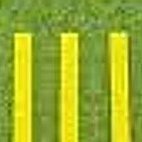Identifying trees, plants and weeds
-
Recently Browsing 0 members
- No registered users viewing this page.
-
Topics
-
-
Popular Contributors
-
-
Latest posts...
-
91
Trump promised 200 trade deals. He’s made 3
Perot got NAFTA right. That sucking sound you'll hear is American jobs and factories going south. He said that in 1992. As I recall, Trump was just a TV personality when that abortion of a deal was signed. And decades of other bad trades deals that brought us this: BTW, look at 1992 on the graph... Perot was prescient. Trump's trying to fix it. It's not sustainable. -
93
USA Measles Resurgence in the U.S. Reaches 33-Year High Amid Vaccine Hesitancy
Of course, anything that can get past any one of our three main defences can potentially be dangerous. However rabies, is not cause by a virus. What is in the saliva of a rabid animal? I sense a new topic coming soon on that. There it can be fully explained. -
112
Do Foreign Men Often Move to Thailand Because They Can’t Get Women Back Home?
If that's what you wish to do, feel free. -
23
The “Good Guy” Foreigner in Thailand: Is It Always Pure Altruism?
You really need to get a life. -
44
FBI launches criminal investigations of John Brennan, James Comey over Trump-Russia probe
Well, IMHO, having lived for almost 80 years of watching politics, especially Russia/US antics, I now see a US that has been changed from a democracy to an oligarchy just like Russia. Trump has appointed the Rich of the Riches to most of the cabinet positions even though none seem to have any idea on how to run those particular agencies. In addition they seem to have been ordered to replace any senior officials of their agencies that do not follow the president's agenda 100%. He uses the agencies it seems to me to take revenge on anyone that does not seem to worship him and his dreams of a throne in his kingdom. This is my impression anyway, but he seems to stil praise Putin most of the time and by using the seat of the government to control what people even are told all the time is scary and IMHO just like life in Russia. I sure hope that I awaken from this nightmare soon. -
-
-
Popular in The Pub









.thumb.jpeg.d2d19a66404642fd9ff62d6262fd153e.jpeg)





Recommended Posts
Create an account or sign in to comment
You need to be a member in order to leave a comment
Create an account
Sign up for a new account in our community. It's easy!
Register a new accountSign in
Already have an account? Sign in here.
Sign In Now